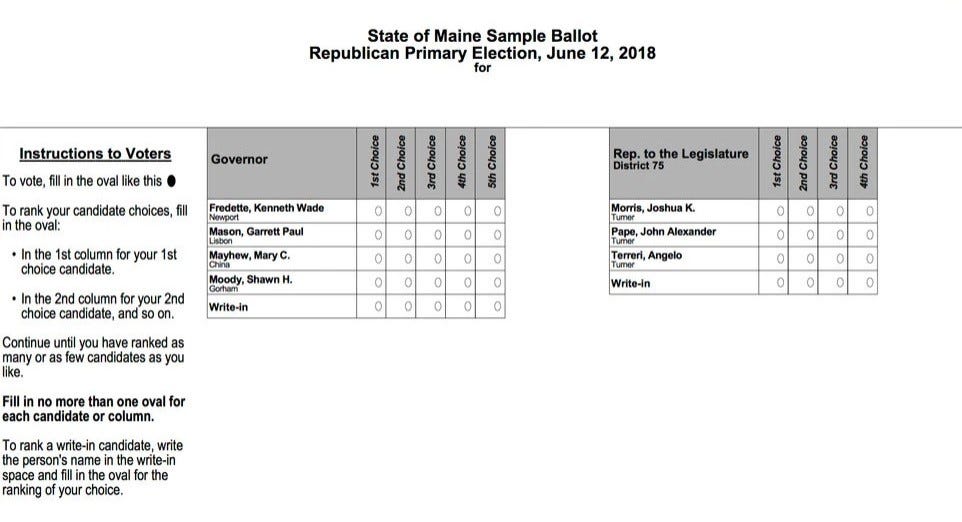What is it?
Increasing numbers of municipalities are trying this new form of voting, ranked choice voting (RCV), so we should know what it is and how it works. In general, you get a slate of candidates and you pick one for 1st place, another for 2nd and so on. It sounds a lot like how we do things day to day. If we can’t find our first choice at the grocery store, we look for something else.
Here is the principle:
· Voters rank their candidates on a ballot
· Votes are counted for each candidate
· The lowest vote getter is eliminated (if no candidate gets enough votes to win)
· Any votes for an eliminated candidate are redistributed to their next ranked-choice
· Votes are counted for the remaining candidates
· Eliminations and redistributions continue until a winner is found
What’s Good About it?
The idea is that you end up with the person with the greatest support and you don’t need to hold costly, additional elections. There is also a claim that there would be less negative campaigning, as 2nd place could still be a winner.
What’s Wrong With it?
For many people, this kind of voting is too difficult and discourages them from participating. Given the foofaraw in the Florida election long ago (and that only involved issues with “chads”, one can understand why having to make more than one choice would be difficult. It would also lead to more spoiled ballots as people make mistakes. Additionally, as in Oakland, California, long after the election it was discovered that the election officials screwed up the count, misallocating 2nd choice ballots. In fact, the wrong person was named the winner. We already know that the election process seems to stymie the governmental types running it; this only makes it worse. And it’s likely we won’t know the result for some time. This is presented as a problem, but we know that Blue states have long had this issue with the more straightforward ballots.
In many places it is pointless, because in November, state laws only permit two people on the ballot (Top Two). That’s the case in California. Ballot access rules and lack of support for anyone representing a third party means that choices would be very limited. If your choices are between three Democrats and you’re a Republican, you don’t want to vote at all.
The person with the most votes could possibly lose because they didn’t achieve 51% on the first ballot. Your vote could cease to count if you didn’t select all candidates for a spot, which is likely to happen when you really don’t like some of them. Once your last vote is eliminated, your vote is gone.
Where Do People Stand On RCV?
Most support comes from the Democrats, which should be worrying. If elections were truly open, so we could select from a large slate, this would be very helpful, as it opens the door to less-well-funded third party candidates, who might be far more to your liking. But as noted before, state and local laws often prevent this, saying that it is too hard for voters to have so many names to choose from. (This despite having two gubernatorial recall elections with many candidates named to replace the two despised governors.)
Initially, I thought this was a good idea as it would presumably lead to us having more options, but the more I learned, the more skeptical I became. Instead of this “fix,” we need to focus on opening up elections to people who have new ideas on how to solve problems the R’s and D’s have tussled over for years with no progress. A perfect example of this was Donald Trump, a man who vacillated between parties, but was really his own man. After years of failure from the two major parties to do anything worthwhile in the Middle East, he ushered in the Abraham Accords, a solution that only a businessman would have considered. The Accords represent a big first step toward peace. By inviting more people to run and making ballot access easier, we have the opportunity to get better ideas than the two parties will ever have.
AMAC’s View
I am an AMAC member and have just begun the CA-10 Advocacy Group (see me if you’d like to be invited to meetings.) AMAC is the Association of Mature American Citizens, founded in 2007, and open to people over the age of 50. It is the conservative alternative to AARP, a group who showed their true colors in their support of Obamacare and other, anti-mature-adult initiatives. Check it out. You might find you like it better. And unlike AARP, you are not an automatic member when you get to the right age. With AMAC, you get to choose.




